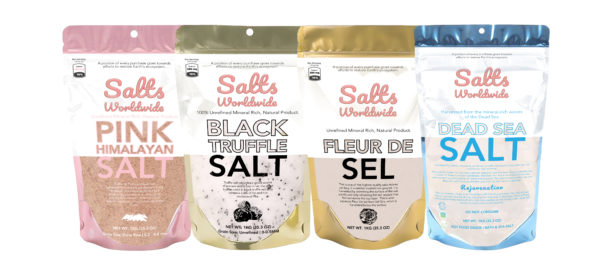
Himalayan mountain sea salt is one of the most beneficial types of salt to consume. It contains 84 different minerals, replenishing electrolytes and reducing the risk of infection and cancer. Here are some of its benefits:
Himalayan salt contains up to 84 minerals
Himalayan mountain salt is a rich source of iodine. It is one of the minerals recommended by the World Health Organization. Additionally, Himalayan salt contains several other minerals that are insignificant in table salt. These minerals are abundant in other plant and animal foods. The World Health Organization recommends that we consume iodized salt or fortified salt for health benefits. Listed below are some of the most common minerals found in Himalayan salt.
Zinc: A trace element in Himalayan salt is found in every cell of the human body and is crucial in maintaining healthy skin and preventing acne. Zinc helps fight bacteria and bacterial infections. Chromium and iodine help to keep the skin’s surface clean. Other minerals found in Himalayan salt include calcium, magnesium, phosphorus, potassium, and chromium.
Calcium and Magnesium: In comparison to table salt, Himalayan salt contains 84 different minerals. But these are in trace amounts and do not help us meet our daily nutritional requirements. For example, one gram of pink Himalayan salt contains about three milligrams of potassium. The daily recommended potassium intake is three thousand milligrams. However, consuming a balanced diet with plenty of potassium can provide the same amount of potassium.
Iodine: Lack of salt can cause iodine deficiency, a condition that can lead to anemia, heart disease, and other health problems. Taking a salt supplement can be beneficial for your overall health. Just make sure to choose a salt product that contains trace minerals. If you are taking medication or taking supplements, it is imperative to consult your doctor first.
It replenishes electrolytes
Pink Himalayan salt is an excellent source of electrolytes, including potassium and sodium. Regular table salt is primarily sodium, but pink Himalayan salt contains both salts. Adequate electrolyte levels are important for proper nerve, muscle, and blood pressure function. Improper electrolyte balance can impair an athlete’s performance and pose health risks. Resupply with potassium and sodium is important for preventing and treating muscle cramps, which are caused by a lack of electrolytes.
Himalayan mountain salt contains many trace minerals that are often lacking in everyday food. It contains 84 minerals and has an extremely balanced crystalline structure. It also has a high energy content, which allows it to be easily metabolized by the body. This is why industrial table salt cannot compare to this salt’s vital energetic effect. Natural rock salt contains less biochemical and physical value than mined salt.
Potassium is a vital mineral found in Himalayan salt. It balances sodium in the body. Potassium regulates blood pressure. It relaxes blood vessels and lowers hypertension. Potassium also aids in the conversion of glucose into energy. It also helps the body fight off bacteria and other diseases. Therefore, it’s beneficial to have enough salt in your diet to combat dehydration.
Pink Himalayan salt is an excellent source of electrolytes. Simply add a tablespoon of it to a glass of water before your workout. It will replenish electrolytes and minerals that are vital to the body. This salt contains 84 trace minerals and is beneficial for athletes and sports enthusiasts alike. It also helps athletes recover faster from intense physical activity. If you’re not a fan of tea, you can also try drinking orange juice with a teaspoon of pink Himalayan salt mixed into it.
It reduces the risk of infection
Although the amount of sodium in our bodies is essential for preserving life, it is known to negatively impact our health. People with kidney disease or those on a sodium-restricted diet should be particularly careful about the amount of salt they consume. Even those who are otherwise in good health should watch their sodium intake to avoid excessively high amounts of sodium. According to a Centers for Disease Control and Prevention report, 89 percent of adults consume more sodium than is recommended.
While the mineral composition of Himalayan salt is less than that of table sugar, it does contain 84 different trace elements and minerals. The latter includes magnesium, calcium, molybdenum, and strontium, to name just a few. Studies show that table salt has more sodium and less iron, whereas Himalayan salt is more abundant in potassium, magnesium, and trace elements. Consequently, it reduces the risk of a variety of lung diseases.
Himalayan mountain salt is an excellent exfoliant, and a saline rubdown is beneficial for those who suffer from clogged pores. Applying a layer of the solution to the affected area can reduce the risk of infection. Rinsing this off after a couple of days should produce visible results. The salt is also excellent for cleansing the skin. Mix it with your regular face wash, and wash it away afterwards. The result will be glowing skin.
Himalayan salt is harvested using the traditional method of “Dome and Pillar” mining. In addition to removing impurities, the salt undergoes a thorough cleaning process called Optically Clean. This process removes all contaminants and foreign matter. It also helps reduce the risk of infection. A high-quality Himalayan salt should be used for bathing. The salt is considered to reduce the risk of infection by lowering blood pressure and reducing the risk of infections.
It reduces the risk of cancer
The health benefits of Himalayan mountain salt are well known, but what makes this variety different from others? The answer lies in the large amount of minerals and trace elements it contains. As compared to table salt, which contains only sodium chloride, Himalayan salt is higher in calcium and magnesium, along with a bit of potassium. In addition, while other types of salt do contain some minerals, the amount in Himalayan salt is much higher and the mineral content is less noticeable.
Pink Himalayan rock salt is available at most health food stores or online. Some companies manufacture powder and sell it online in large amounts, making it an excellent choice for health-conscious consumers. Many people choose this salt over ordinary table salt because it is affordable and is good for cooking with fish. However, there are some health risks associated with this salt. Despite these risks, it is highly beneficial and is a popular choice among household shoppers around the world.
The evidence for Himalayan mountain salt’s health benefits is largely anecdotal, and not based on peer-reviewed journal articles. While it does contain some iodine, it is far from a sufficient source. While pink Himalayan salt does contain some iodine, you might need to get additional sources of this trace mineral to make up for the missing amount in your diet.
The Himalayan pink salt contains 84 trace elements, many of which are present in trace amounts. In fact, the amount of chromium found in Himalayan salt is much lower than what is found naturally in soil. In addition to these minerals, Himalayan pink salt contains trace elements like iron, zinc, manganese, magnesium, and manganese. The combination of all these nutrients helps to maintain a healthy balance in the body.
It reduces the risk of high blood pressure
Himalayan sea salt has been touted as a healthier alternative to table salt, and many believe that it can also lower blood pressure. Hypertension, also known as high blood pressure, is a common problem affecting nearly half of American adults. Left untreated, high blood pressure can lead to many health problems, including a heart attack, stroke, or metabolic syndrome. It can also lead to damaged kidneys. According to the Mayo Clinic, people with high blood pressure should limit their sodium intake to no more than 1500 mg a day, and use unprocessed salt as a substitute.
While table salt contains a lot of aluminum, the Himalayan salt contains less than a half of this amount. Sodium is not good for our health, as it can damage nerve cells and can lead to neurodegenerative diseases. The FDA has set a daily limit for iodine for an average adult of 140 mcg. To get this amount, consume approximately one teaspoon of Himalayan black salt daily.
The amount of sodium in pink Himalayan sea salt is higher than that in table salt, but the difference is not large enough to make a difference in overall health. According to Kris Sollid, senior nutrition communications director for the International Food Information Council, Himalayan sea salt contains more calcium, iron, magnesium, and potassium than regular table salt. While these differences in amounts of sodium are small, they do not have any noticeable effects on health.
The benefits of pink Himalayan salt include a decrease in blood pressure. As well as being high in potassium, it also reduces the risk of heart disease. Additionally, it improves digestion, strengthens the body cellularly, and promotes weight loss. Further, it is easy to dissolve pink Himalayan salt into the bloodstream. Compared to other types of salt, pink Himalayan salt is easily absorbed into the bloodstream.



